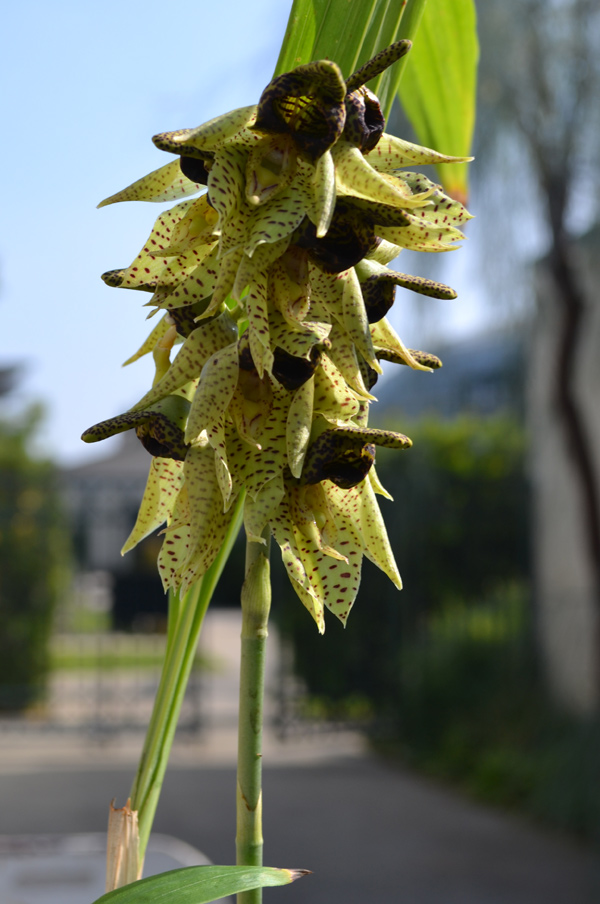Posted on Thu., Nov. 29, 2012 by
It’s a bird…. It’s a plane…. It’s orchid pollen? Pollen has been flying at the information desk in The Rose Hills Foundation Conservatory for Botanical Science this past month! Lucky visitors who were in the Conservatory at the right place and at the right time were able to witness the spectacular pollination process of Catasetum sanguineum. What makes this pollination process so fascinating is the ejection mechanism the plant uses to attach pollen to different types of insects.
Typically, insects do all the work, but not in the case of this orchid. In its native jungles of Colombia and Venezuela, at elevations below 2,500 feet, the Catasetum sanguineum waits for the perfect opportunity to find the right pollinator. For example, when a bee attempts to land on the flower to extract nectar it soon finds out that there is none present. Instead, the flower provides a desirable and flavorful substance on the labellum, a landing location for the bee.
Then the real fun begins. There are two antenna-like structures located in the upper center of the flower itself. As soon as the bee lands onto the column appendage, the plant ejects pollinia (a cluster of pollen) with great force. (See this mechanism in action in the lab in the clip below.) The pollinia has a gummy-like substance that acts as a kind of shock absorber so that when it lands onto the bee’s thorax it doesn’t hurt it. The gummy-like substance then travels with the bee until it reaches a female Catasetum. The structure of the female flower is shaped in such a way that it catches the sticky region and rips the package off from the bee’s thorax. Seed production has begun.
Like Cymbidium or Oncidium orchids, Catasetums have pseudobulbs. During the winter, these plants enjoy a dormant season, when they drop all of their leaves and stay inactive until the following spring. This plant also has the capability of producing both female and male flowers. A typical trick growers use to obtain female flowers is to place them in an environment with a large amount of light. If a grower wanted to produce more male flowers, they would place the plant in a shadier region of their greenhouse. Catasetum sanguineum does best in an intermediate environment with a maximum of 85 degrees during the day and 50 degrees at night.
The next time you see an orchid like this, be sure you don’t get too close or else you might become its next pollinator.
Brandon Tam is The Huntington’s orchid specialist.
